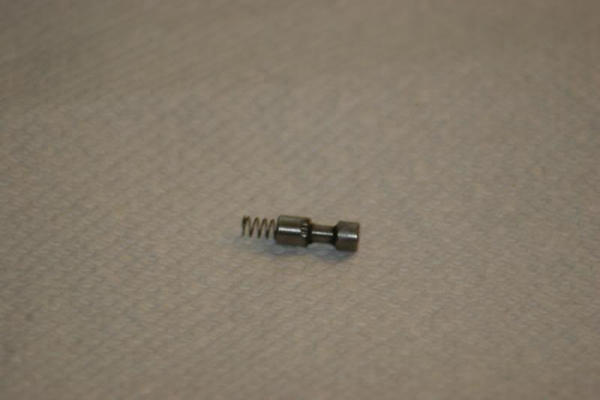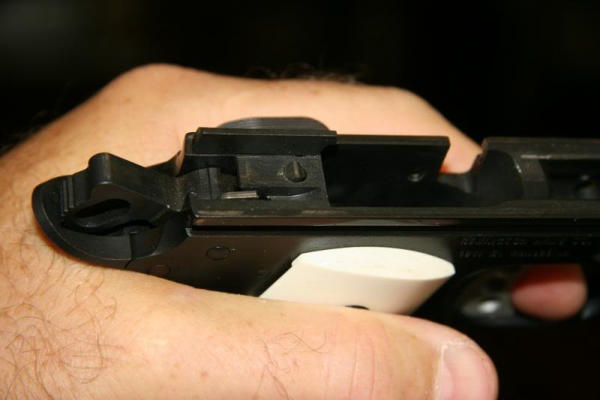Editor’s Note: Today’s guest feature is submitted by Greg Moats, industry insider.
In today’s shooting arena we have a historically unique “technology inversion” taking place. Those of us long-in-the-tooth types, cut those teeth on the 1911 and eventually gravitated to high capacity, polymer striker-fired guns because they were extremely reliable, very accurate and comparatively cheap. It is indeed frustrating to shoot a course of fire more proficiently with a $500 “tupperware” gun than with a $3000 custom built 1911—but it happens with disgusting regularity! To a large degree, shooters under say 40, are experiencing just the opposite progression. To air some familial dirty laundry, I embarrassingly confess that my grandson has shot a Smith & Wesson Shield, a SIG P320 and a few different GLOCKs but never a 1911. Granted, he’s only 12 and I have time to rectify that disturbing oversight in his upbringing; however, there are a number of younger shooters who have cut their teeth on “modern” guns but are now test-driving 1911’s because of their exceptional trigger action and resultant unmatched track record in competition. The inversion is in full swing and the following -- while old hat to some of us -- is intended for those whose wisdom teeth aren’t yet cut regarding the 1911.
While not existing in a vacuum, the 1911 has not been immune to alterations or perhaps “morphings” intent on “improving” the ergonomics and safety of the original design.
One notable example predates the current spate of petroleum-composed firearms. In August of 1939, long term Colt employee, William L. Swartz was issued a patent. In part the stated intent of the patent was, “…to provide safety means of novel construction for locking the firing pin of a firearm against movement except when the user is properly gripping the arm preparatory to firing.” On a handgun that possesses multiple positive safety devices, one wonders if the addition of this firing pin block was considered necessary or simply the attempt of a senior employee (much like a Government bureaucrat) to justify his existence. In 1941 when Colt ceased production of their commercial model 1911’s in order to meet military requirements for the war, the Swartz safety was discontinued since the Government had not given approval of the device. Mercifully in 1945 when Colt resumed production of guns for the civilian market, the Swartz safety was not included.
The device remained in “hibernation” until it was resurrected by Kimber as (I’m guessing) a marketing tool to distinguish itself as unique and superior in some respect.
One of the unintended consequences of the device is that there are documented cases of owners, during re-assembly, forcing the slide onto the frame while the grip safety is depressed thereby shearing off the tip of the firing pin actuator. This renders the gun to paper-weight status.


Whether the movement of the firing pin block is activated by depressing the grip safety or by pulling the trigger, a timing issue is introduced to the firing sequence. Specifically the maneuver needs to be completed PRIOR to the hammer striking the rear of the firing pin. There are numerous well documented cases where the hammer fall has been completed prior to the plunger (Series 80) or firing pin lock (Swartz) clearing the recess in the firing pin. The result is a deafening “click.” With the Series 80 it also ultimately results in a damaged plunger that eventually will get stuck in place and not allow the pistol to fire.
I’m told by gun-guys smarter than me (a massive, non-exclusive group) that with the Series 80 system this timing issue is often the result of a poorly executed trigger job. A certain amount of “over travel” on the trigger adds an element of insurance to the movement of the plunger and an over travel stop adjusted too precisely can prevent that from happening. This shortens the overall movement of the trigger, allowing the hammer to fall earlier than it previously had, potentially before the plunger is moved out of the way.
While the probability of this happening may strike you on the order of being hit by a meteorite or the Kansas City Chiefs winning the Super Bowl, it does happen. At least it happened to me. I purchased a particularly pristine used Remington R-1 once at a very nice price. On my second time to the range with this gun, I was into a practice session by about 50 rounds when the trigger started feeling “glitchy.” The trigger weight became increasingly severe until it took white knuckled, gritted teeth effort to make the hammer fall. Then I heard that deafening, “click.” Upon complete disassembly, the plunger was scarred and the tip of the plunger lever was fractured. Whether the cause was an overly precise set trigger stop, I’ll never know; whatever the cause, the effect was catastrophic.
To those of us that have a long and meaningful relationship with the 1911, the Series 80 vs Series 70 debate is akin to 9mm vs .45 ACP or Isosceles vs Weaver. For those of you dipping your toe in the water of the 1911 for the first time, realize that a Swartz or Series 80 platform will serve you well. While superlative trigger pulls can be achieved on guns with firing pin blocks, be aware that at least with the Series 80, there’s more potential for problems simply because there are more pieces and added functions involved in the chain of events that make the gun go “bang.” “Fine tuning” the parts or replacing them with aftermarket alternatives requires competency. Anything less is poking a sleeping tiger. Realize also that virtually every high-end, boutique manufactured 1911 (Baer, Wilson, Brown, Nighthawk, etc.) come without a firing pin block. There’s probably a reason for that.
Greg Moats was one of the original IPSC Section Coordinators appointed by Jeff Cooper shortly after its inception at the Columbia Conference. In the early 1980’s, he worked briefly for Bianchi Gunleather and wrote for American Handgunner and Guns. He served as a reserve police officer in a firearms training role and was a Marine Corps Infantry Officer in the mid-1970’s. He claims neither snake-eater nor Serpico status but is a self-proclaimed “training junkie.”